As an Amazon Associate I earn from qualifying purchases.
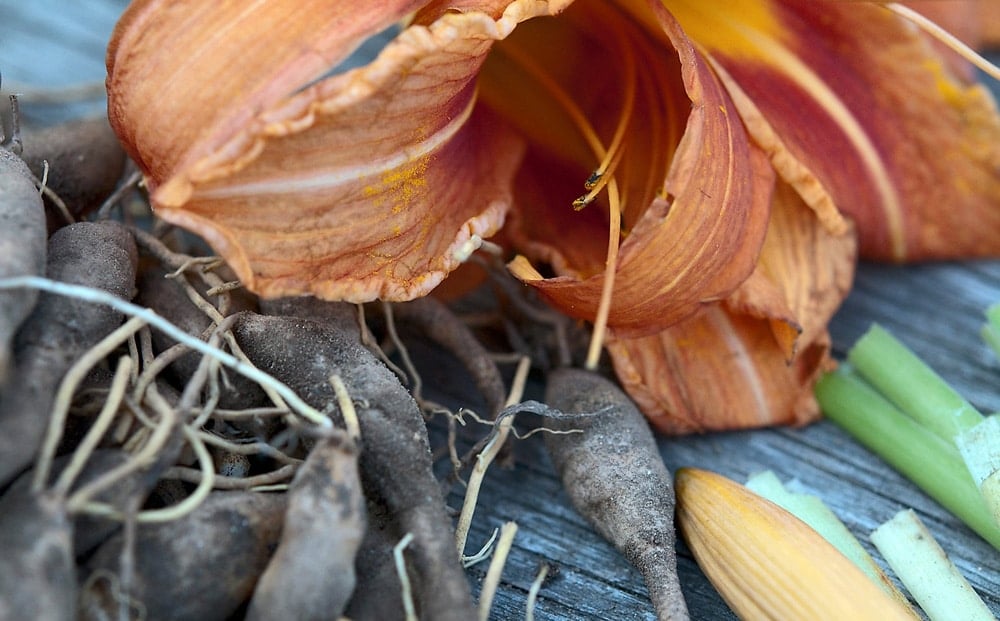
Daylilies are not only edible, they are spectacular. After sampling the flowers, flower buds, young stalks and root tubers, I’ve come to the conclusion that they’re so tasty I may grow them as a food crop.
Let me start by saying that edible daylilies are the common daylily, Hemerocallis fulva, as well as its various Hemerocallis friends and relatives; there are thousands. What I am most definitely not talking about are bona fide lilies, like the Easter lily, which, if you are unfortunate enough to eat, you had better hope that the Resurrection is real…
I’d read long ago about the edibility of the common lily of my youth, which we incorrectly called tiger lilies because of their orange stripes. But this would have been in the 1980s, when edible flowers reached their trendy zenith. Nasturtium flowers all over the plate, anyone? Meh. My young self wrote off lilies as part of that prancy fad.
I first foraged for daylilies in Massachusetts, years ago. Any of you ever been to Cape Ann? Gloucester is covered in daylilies, and its ritzier neighbor Rockport has more daylilies than grass. Daylilies are the most common flower on the whole freaking island. So common my sister Lizz and my brother-in-law Mark have tons of them in their tiny yard.
So I am sorry to tell you there will be no stirring tale of high adventure as we stalked the semi-wild daylily. Nope. We just pulled a few plants and picked the flowers and buds from some others that were in the yard.
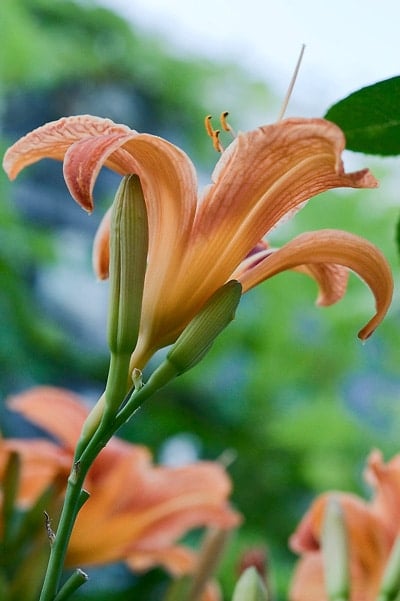
The drama with daylilies is all in the eating.
I first separated the plants into flowers, buds, and tubers — unlike true lilies, daylilies don’t have bulbs, they have little tubers instead that look like miniature fingerling potatoes. I then stripped the outer leaves from those plants that had not yet flowered, until I got to the white part.
Most sources say to saute the unopened flower buds with a little butter or oil and call it a day. Sounded like a plan, especially since I wanted to really taste the plant, not any supplemental seasonings. So in they went, just lily buds, butter and salt.
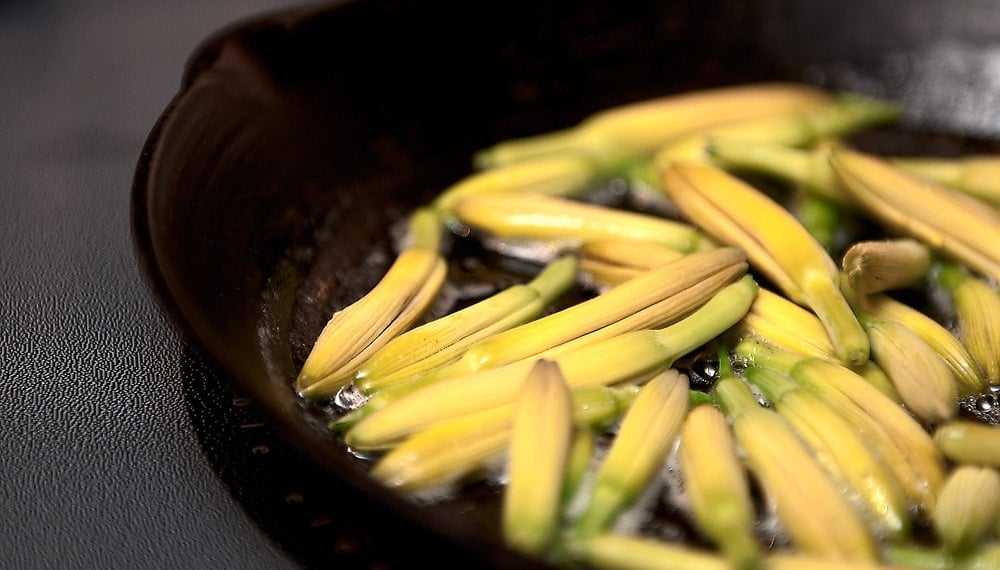
Delicious. Briefly cooked, the buds have a bit of knacken, a German expression meaning a “pop.” Yet the insides reminded me of squash blossoms. The taste? Green, with a whiff of radish and a dash of green bean. Honestly, I’d eat this as a side dish any day, any place. It needs nothing else.
We tried some of the stalks, but they were not as good. Texture like lemon grass, only without the wonderful lemon aroma. More like a bland, tough scallion. Certainly edible, and not terrible, but nothing like the buds.
The flowers are OK. They are more for color than flavor, and they are said to thicken soups the way okra or file powder do. The Chinese use them in hot-and-sour soup. Will have to try that more some other time.
That left the little tubers. First thing I noticed was that some looked exactly like fingerling potatoes, while others were pure white, like the inside of jicama. I ate a white one, and it tasted like jicama — only better. Like a raw sweet potato. Or rather a sweet, raw potato, not a yam.
I did the same treatment to the tubers: Butter, salt, saute. Only I added some black pepper this time. I like black pepper on my potatoes, so I reckoned I’d like this, too.
I was right. These are quite possibly the best tubers I’ve ever eaten. OK, that might not sound like ringing praise, but consider that I am including real potatoes in there and you get the picture.
Think really young fingerling potatoes, only with a sweetness to them. White ones are sweeter than the yellow ones. Yellow ones seem more substantial.
The only things daylilies have against them are allergies and size. A small number of people who eat daylily flowers get farty and nauseous afterwards; I hear “less than 5 percent” a lot, but I can’t verify it. Suffice to say you should eat only a little at first, the have at it.
The second “strike” against the lily, if it can be called one, is size: You’d need to uproot about five or six plants for one meal. But when you consider that hemerocallis fulva is considered a noxious weed in many of the 42 states it’s gone feral in, go ahead. Dig away.
Doing a little more research, I find that according to the USDA, the daylily has gone wild in every state except Alaska, Hawaii, Oklahoma, North Dakota, New Mexico, Arizona, Nevada, and, um, my own state of California. Sigh.
That said, you can’t swing a dead cat without seeing a planting of edible daylilies in a parking lot or person’s house, and they are so common in urban settings Charlotte Bringle Clarke writes about them in her Edible and Useful Plants of California.
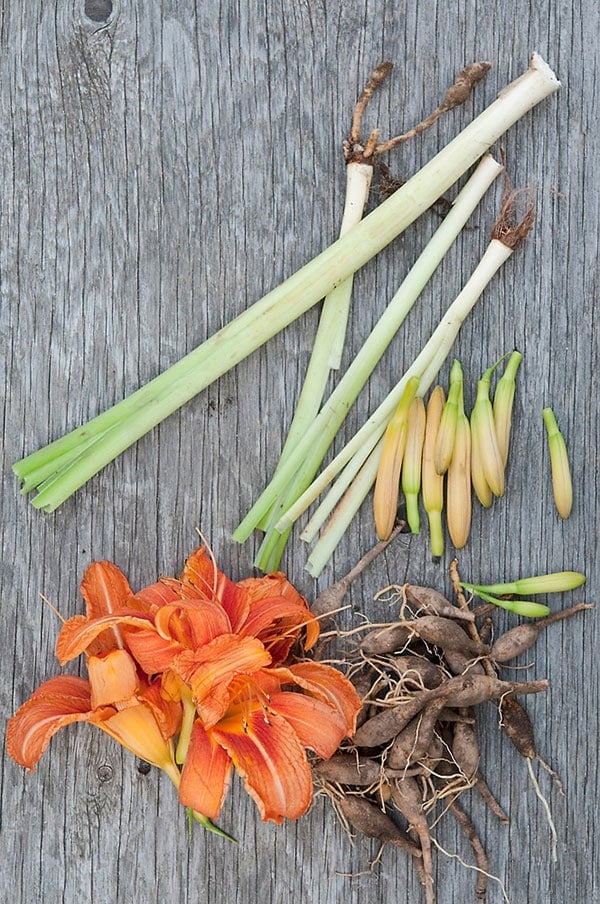
Daylilies originally came from Asia, probably China. Chinese cooking uses them all the time, even in such starring dishes as moo shu pork and hot-and-sour soup. You will often see dried flowers called “golden needles.”
Euell Gibbons liked to batter-fry the buds, and lots of other old-timers “creamed” their daylily tubers, which sounds unappetizing. But beyond hippie forager types and the Chinese, I’ve found no other use of the daylily as food.
Pity. It is, as Jimmie Walker would say, Dy-No-Mite.


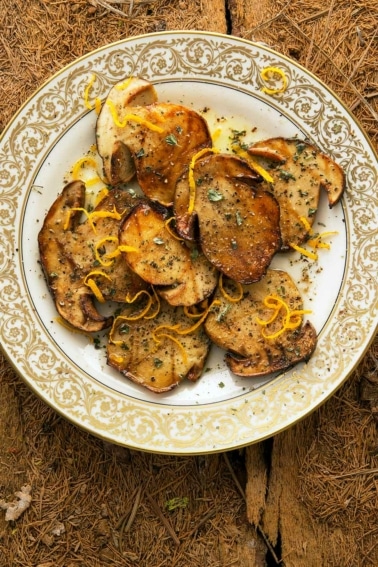
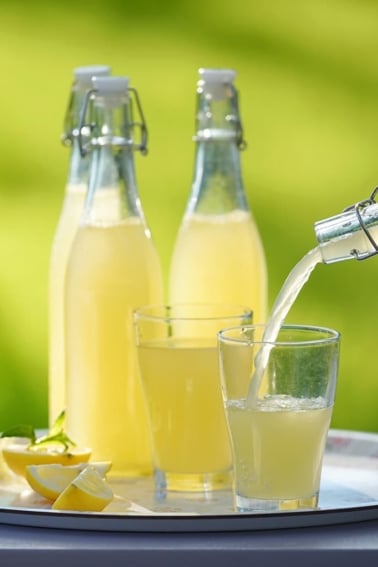
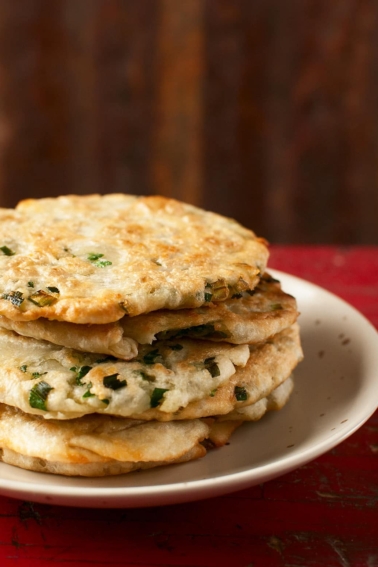
When is a good time to harvest daylily tubers
Jim: Early spring, so around now.
I have a crap ton of these plants if anyone wants them. I just thinned them out of my flower bed and have no where else to plant them.
Hi Hank,
Where did you get this edible daylily plants?
I ate a bunch fresh, they were wonderful, kind of tasted like salad and something different. Then they made me sick.
Madison: Guess you are in that 5 percent I wrote about. Bummer. Sorry to hear it.
Or she ate too many for a first try. She said she ate a bunch and your article suggested having a small amount the first time to test your tolerance.
I only recently learned about daylilies being an edible bloom at a garden fair. The vendor encouraged me to taste the petals of Hemerocallis ‘Frans Hals’ — it tasted like mango!
Does anyone know if the buds can be frozen for later?
Mariette: Yes, but boil them for 30 seconds, then shock in cold water first before freezing.
I enjoy the mild, smooth-as-butter texture of a fresh blossom straight from the stalk to my mouth. Obviously, more nutritious because there’s no processing such as heat or fat involved.
I could see serving the flowers as a vegetable dish for young’uns, if they’re also growing up with a rigorous doctrine of “don’t eat the plants without my ok.” They might not be a fan of green beans of brussels sprouts, but who wouldn’t be enchanted by the idea of flowers for dinner?
I misread Euell Gibbons’ book in my youth and batter-fried the open flowers along with the buds. Both were good, and my permissive-but-doubting family actually enjoyed them, but the flowers naturally had FAR more crispy outer coating, so only the buds could rightly be called a healthy vegetable dish.
I wouldn’t eat the mature stalks, but I can tell you the young shoots are delicious! Texture like a skinny scallion, tastes like a mild asparagus.
Great article!
Hi Hank. Thanks for this. I tried one blossom today for bkfst… before reading your post. It had bloomed YESTERDAY and was on its way out. Sauteed it with scrambles eggs, so it didn’t matter how it looked. I’d describe the taste as flowery and just so delicious. My tummy is doing a little rumble so we’ll see. If not problem, I will continue to harvest them on the second day and enjoy both the beauty of the first day and the tastiness of the second!
PS Am not a creationist, but I when I marvel at the beauty and order of plants and all, how not to sing a hymn of praise? Blessings! Mary
It has medicinal benefits according to Chinese medicine =) It’s used in hot and sour soup and special Chinese New Year dishes. I typically buy it in dry form from the grocery store, then rehydrate them in water. I’ll try planting some now!!
There are no “berries” on daylilies. Do the leaves of these “daylilies” come up from the ground (daylily) or off of a vertical stalk (lily)?
Sue: Who are you referring your question to?
So, no one mentions the (what looks like) little black “berries” on the Day lilies. Do I avoid those? Not sure what function they have on the lily. Any information?
Those would probably be “tiger lilies” – not the common day lily.
The buds are wonderful lightly steamed. The flavor is then similar to greenbeans – young, tender, juciy ones straight from a garden, with maybe a touch of pea flavor.
Only the base of the stalks are really edible. They are best long before the daylily is in bud or flower.
As someone else pointed out, the new shoots in late winter or early spring are also edible, with good flavor.
In addition to checking for sensitivities, people should make sure that any plant they are considering consuming is growing in a wholesome environment. An isolated roadside or a yard that is not sprayed with chemicals should yeild daylilies that are safe to eat, but we would not eat anything growing beside a busy road, or near a ‘chemlawn’. Synthetic chemicals or heavy metals in the soil can cause reactions, or make people ill.
And – though you mention that you are not talking about ‘Easter lilies’, Hemerocallis are not true lilies. To help avoid confusion, we always refer to them by their binomial or botanical name, Hemerocallis fulva. In casual conversation we avoid shortening their common name ‘daylily’ to just ‘lily’.
By the way, some true lilies, ‘Lilium’, are poisonous, but some are edible. As ever, everyone should be certain about what they are eating before trying it!
I’ve known forever about daylilies being edible. When I was about 8 the roots and white parts of the stalk raw were my favorite snack. they taste like sugar snap peas shell, sweet but crisp.
Hello Hank,
I have just found you and your website…what an inspiration! I teach Ethnobotany, wild plant harvesting, nature connection and survival skills here in WA for the last 14 years and I LOVE your writing style…
Very entertaining and great technical info! Thanks for your thorough article here-I would love to share it on my website (just building). My partner is an avid fisherman and hunter as well. Your books are going to be a part of our library ASAP.
I hope we can join you some time in the future for one of your adventures.
Lindsay
plantdorks.com
I tasted every part, it tasted like asperagus but it was good.
got a yard full of these…cant wait till they bud! Got enough plants that pullin up a few for the tubers wont make a bit of difference. cant wait to try those as well. thanks a bunch!
Iv’e used day lily fresh blooms in salads & they were fine… BUT the best thing ever to do with the blooms, is to dry them and use them for seasoning. Dried & ground, they add a wonderful mushroomy taste to any sauce gravy or marinade!
-LLL
thanks for this article and all the comments. these are one of my favorite flowers….can’t wait to try them, especially the buds.
does anybody know if the leaves can by used in smudge sticks?